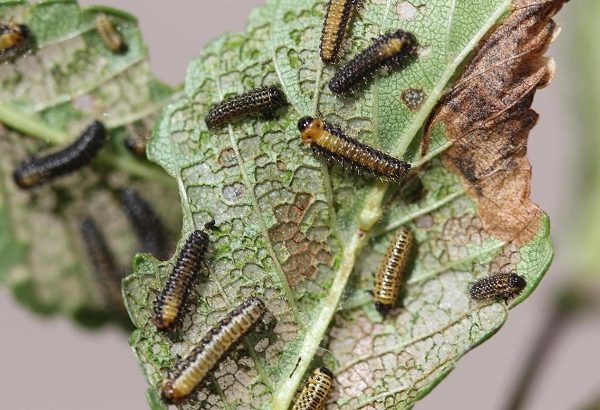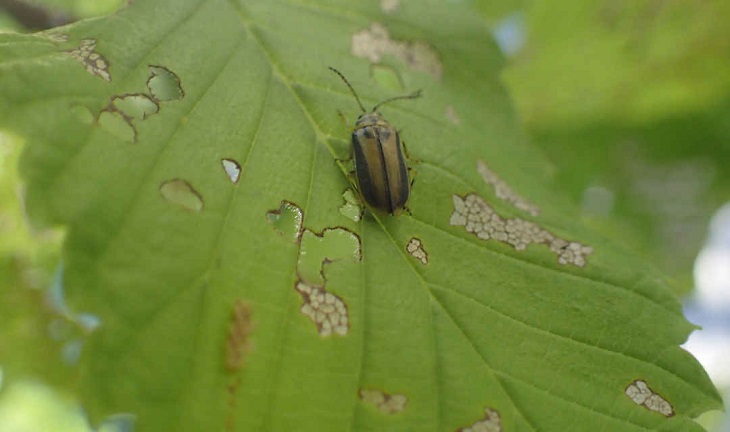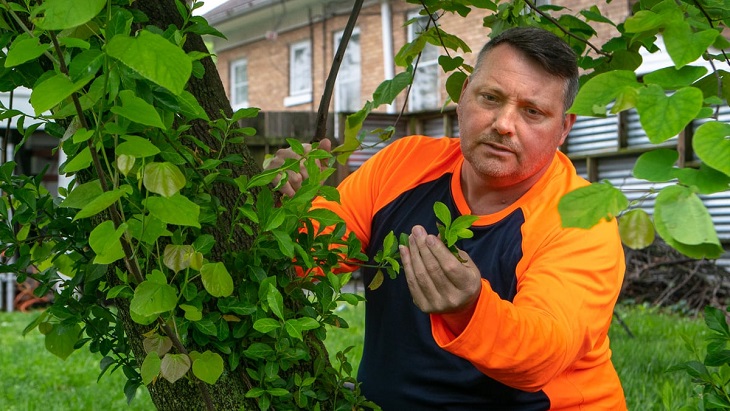29
Feb

Many species of insects can harm elm trees, but there’s one invasive pest that poses a serious risk. Lurking among their vibrant leaves and massive branches that beautify your garden, there’s a silent enemy – the Elm Beetle. If you’re wondering about the telltale signs of leaf-munching and the declining health of your beloved trees, you’re not alone. In this guide, I’ll go through how you can identify the damage from these pests as well as how you can safely get rid of them.

If you suspect that this pest might be lurking around your trees, consider getting Elm Leaf Beetle treatment services from professional arborists. Arborist companies provide a full guide to identifying and managing the infestation. They understand the intricacies of the beetle’s life cycle, from the emergence of adult beetles in October to the devastating defoliation that can occur by February.
The treatment strategies encompass a range of methods, each tailored to address the unique challenges that these destructive pests cause. Early intervention is highly important, after which they typically use techniques such as trunk injection with Imidacloprid, a proven and environmentally friendly approach. Foliar spraying and non-chemical control banding are also common, as they cater to various tree sizes and infestation levels.
But before starting with Elm Leaf Beetle treatment, you need to recognise the distinctive characteristics at each stage of its life cycle. Adult beetles, measuring 6 mm, showcase an olive-green colour and prominent black stripes along their backs. These visual cues make them easily identifiable. The females lay yellowish eggs in double rows beneath leaves, numbering from 5 to 25. As these eggs approach hatching, they undergo a subtle colour shift, transitioning to a greyish hue.
The larvae, akin to caterpillars, emerge black upon hatching and after moulting. Following feeding sessions, the larvae transform into a yellowish-green hue, featuring rows of diminutive dark tubercles. The third-instar larvae reach lengths of up to 8 mm and boast rows of dark tubercles along their sides, resembling two distinct black stripes. As the beetle progresses in its life cycle, it obtains a vibrant orange to bright yellow colouring.
Beginning as an egg, the Elm Leaf Beetle progresses to larvae, pupae, and finally, the adult stage. Overwintering commonly occurs among adults nestled in bark crevices, woodpiles, or even within buildings, seeking refuge from the colder months. As spring breathes life into the environment, adult beetles take flight to elm foliage, chewing on leaves and initiating the next phase of the life cycle.
The females, in turn, lay eggs that hatch into larvae, progressing through three growth stages or instars. Over several weeks, these larvae feed on foliage before descending the tree trunk. The mature larvae undergo a stage known as prepupae, characterised by curling into an inactive state.
Subsequently, pupation occurs, often in substantial numbers around the base of the tree. After approximately 10 days in the pupal stage, adults emerge, taking flight to the canopy once more. During spring and summer, the adults engage in feeding and egg-laying activities, perpetuating the life cycle.
The consequences of an abundant Elm Beetle population can be severe. Large elm trees, when entirely defoliated, lose their summer shade, diminishing the aesthetic appeal of the landscape. The defoliation takes a toll on the overall health of the trees, leading to a decline in vitality. The weakening of these trees is not merely a cosmetic concern, but it poses a tangible threat to their long-term well-being.
Understanding the nature and extent of the harm that these beetles inflict is crucial so that you can implement proactive and effective Elm Beetle treatment strategies. By staying vigilant and responsive, arborists and tree enthusiasts alike can work towards preserving the health and aesthetics of their cherished elm trees in the face of potential infestations.

Vigilant monitoring of your trees helps you get timely and effective intervention. So, make sure to visually inspect the leaves at weekly intervals, starting in spring with the first generation of eggs and larvae. Identification markers such as clusters of yellowish to grey eggs and caterpillar-like larvae can serve as visual cues during inspections.
For precise timing of pesticide applications, especially if the beetles are present in large numbers, you can try the heat accumulation method to determine optimal inspection and treatment. When contemplating whether to spray the leaves or use systemic insecticide on the trunks, it’s crucial to target the first- and second-instar larvae, typically smaller in size.
Bark banding, an alternative method, comes into play as soon as you see the third-instar larvae on the leaves. For those who choose to drench or inject the soil with systemic insecticide, spring is the optimal season. This aligns with the period when elm trees produce new leaves or shortly after leaf flush.
Predators such as certain bugs, earwigs, lacewing larvae, and ground beetles naturally eliminate the Elm Beetle. Notably, the small black tachinid fly, Erynniopsis antennata, acts as a parasite by feeding on and killing beetle larvae. The tiny wasp, Oomyzus gallerucae, targets the beetle’s eggs. Conservation of these beneficial predators and parasites is crucial. So, minimising the use of long-lasting, broad-spectrum insecticides will boost the effectiveness of biological control in pest management.